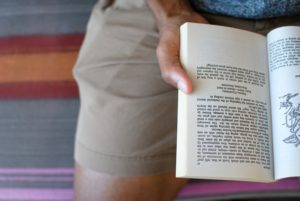“Kell wore a very peculiar coat.
It had neither one side, which would be conventional, nor two, which would be unexpected, but several, which was, of course, impossible.”
The first line of V. E. Schwab’s A Darker Shade of Magic (the opening title of her Shades of Magic trilogy) has us immediately diving into fashion and magic. This gay little heart was soaring right from the beginning. For me, this set the tone as I dove into this wild adventure, and I would eventually describe it to friends as “Harry Potter meets Avatar: The Last Airbender (quoted from Schwab herself) but GAY (my added flourish).”
For those who have not read it yet, I will do my best to not provide major spoilers, so know that you can read ahead without concern.
The basic plot of book one has Kell, our fashion-conscious traveler, stepping between multiple parallel worlds, all of which have a city of London (Red, White, Grey, and a lost world of Black London). While Kell is traveling, he inadvertently brings something back to his London that leads to a lot of problems (as one does).
But, enough about the plot, I’m here today to talk about how incredibly, wonderfully queer this book (and consequent sequels) is.
Enter, Prince Rhy Maresh.

First, and most importantly, I would die for Prince Rhy. We are introduced to this bisexual prince as he laments how he needs to celebrate his 20 years of life with a minimum monthlong celebration (relatable). We later find out he’s had a torrid affair with a pirate (who hasn’t – or hasn’t wanted to), who resurfaces and causes some complications for Rhy’s sensibilities.
Next, we meet Lila Bard. Lila is a thief and career criminal. She’s powerful in her own right, and she will give anyone a run for their money who crosses her. This happens right off the bat when she sets a ship on fire after a man tries to have his way with her.

Lila, as the story unfolds, challenges gender and the notions of what it means to be a woman in a man’s world. In a talk that I went to in October 2019 with author Schwab, she briefly discussed that in her world Lila is non-binary but that the world itself lacked the language to articulate it.
Rhy and Lila are the representation that Marvel and Disney tease us that they have. They’re fully realized characters with depth, soul, and integral meaning to the story. You can’t cut them out for the international audience, unlike certain blockbuster movies that came out in 2019.
There is something important to know about this story, and I think it is one of the reasons why it speaks to me so deeply. It is absolutely a queer-ass-book, but it leaves behind any of the conflict or trauma of coming out, discrimination, etc. (Yes, a few people look a little sideways at Lila and wish she’d wear a dress, but it’s never a major plot point nor is it an actual conflict.)
The story is important because quickly, heterosexuality lost its place as the default for characters, as I read. There was a permeating queerness that created a space where characters could simply be, and I got to learn about who they were as their story unfolds. It felt subversive, whether intended to do so or not, and I’m here for it and want more of it.
![You are currently viewing [Book Highlight] A Darker Shade of Magic](https://ecrumrine.com/wp-content/uploads/2020/02/a-darker-shade-of-magic-victoria-schwab-featimg-1038x576-1.png)
![Read more about the article [Author Highlight] Adam Sass](https://ecrumrine.com/wp-content/uploads/2020/09/OFFICIAL-COVER_flat-197x300.jpg)
